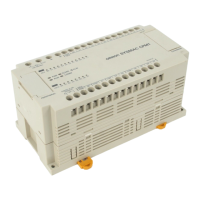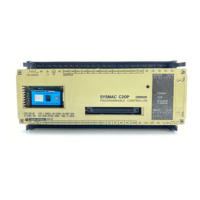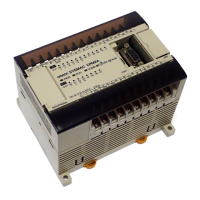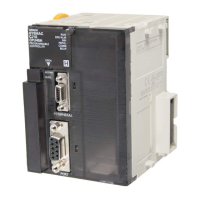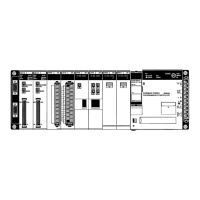!
504
8-1 Alarm Indicators
There are two indicators on the front of the CPU that provide visual indication
of an abnormality in the PC. The error indicator (ERROR) indicates fatal er-
rors (i.e., ones that will stop PC operation); the alarm indicator (ALARM) indi-
cates non-fatal ones. These indicators are shown in
2-1-1 Indicators
.
Caution The PC will turn ON the error indicator (ERROR), stop program execution, and
turn OFF all outputs from the PC for most hardware errors, for certain fatal soft-
ware errors, or when FALS(007) is executed in the program (see tables on fol-
lowing pages). PC operation will continue for all other errors. It is the user’s re-
sponsibility to take adequate measures to ensure that a hazardous situation will
not result from automatic system shutdown for fatal errors and to ensure that
proper actions are taken for errors for which the system is not automatically shut
down. System flags and other system and/or user-programmed error indica-
tions can be used to program proper actions.
8-2 Programmed Alarms and Error Messages
FAL(006) and FALS(007) can be used in the program to provide user-pro-
grammed information on error conditions. With these instructions, the user
can tailor error diagnosis to aid in troubleshooting.
FAL(006) and FALS(007) share FAL numbers 001 to 511. If two instructions use
the same FAL number, the instruction executed later will not be recognized.
Executing FAL(006) will not stop PC operation or directly affect any outputs
from the PC. Executing FALS(007) will stop PC operation and will cause all
outputs from the PC to be turned OFF.
It is possible to program the FAL(006) and FALS(007) instructions to output a
message when executed. The use of these instructions is described in detail
in
Section 5 Instruction Set
.
8-3 Reading and Clearing Errors and Messages
Errors should be cleared promptly by the displaying and clearing errors op-
eration with CVSS/SSS. The cause of fatal errors must be corrected in PRO-
GRAM mode before clearing the error and resuming operation. FAL errors
can also be cleared using FAL(006); refer to
5-27-1 FAILURE ALARM –
FAL(006)
for details.
Errors can also be cleared by turning the PC power off and on, or switching
from PROGRAM to RUN, MONITOR, or DEBUG modes. I/O bus errors, how-
ever, should be cleared with CVSS/SSS.
8-4 Error Messages
There are basically three types of errors for which messages are displayed:
initialization errors, non-fatal operating errors, and fatal operating errors.
The type of error can be quickly determined from the indicators on the CPU,
as described below for the three types of errors. If the status of an indicator is
not mentioned in the description, it makes no difference whether it is lit or not.
If an error has an error code, that code will be output to A400 when the error
occurs. If more than one error occurs simultaneously, the code of the highest
priority error will be output to A400. Errors are listed in order of their priority in
the following tables, with the highest priority errors listed first. Fatal errors
have higher priority than non-fatal errors.
Error Messages Section 8-4
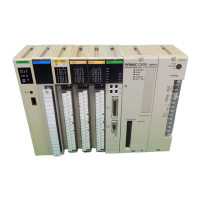
